When I recently traveled to Italy with a group of girlfriends, I was so excited to experience Italian culture– the gelato, the pasta, the wine tastings…. (Is anyone seeing a pattern here?).

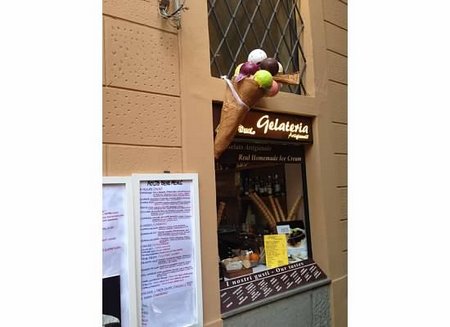

What I was not excited about was Michelangelo.
Ugh.
Long before we arrived in Florence, I hated him on principle. I hated him for the same reason(s) I hate homecoming queens, captains of football teams and head cheerleaders.
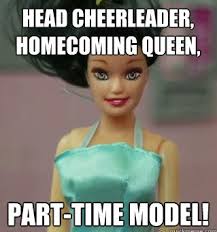
I find their smooth, obvious, well-lit life paths to be too easy and too vanilla and… too different from my own.
Of course, the second we arrived in Italy, I was inundated with Michelangelo.
Statue of David postcards, figurines, greeting cards, posters, playing cards, t-shirts. They put that statue on everything.



As if that wasn’t bad enough, our cab drivers, tour guides, waiters, concierges- an incredibly diverse group of men and women who came from all over Italy-managed to all have one thing in common…. They all worshipped Michelangelo. “He’s so talented, so brilliant, so accomplished,” blah, blah, blah.
Really? How do you say “so annoying” in Italian?
ENOUGH ALREADY.
Then, we went on our guided tour of the Uffizi and Acccademia Galleries.

It seemed that no matter what we were viewing, there was always a tie in to Michelangelo. Some tidbit about his life or his art that our guide just had to share. At first, I found it, you guessed it, annoying. To try to to link all the other artists’ work to him in some way seemed unfair to me. As if they weren’t being given their due all because Michelangelo a la Captain of the Football Team, Most Talented, Most Likely to Succeed had to overshadow everyone else.
However, as I learned more about the story of his life, I began to see that while I had convinced myself that his success had come easy and his fame was so large that it had to be undeserved, I was judging him based upon the one page, glossy, made for television version of his life (i.e. the Facebook version) that left all the struggles, the risks and the disappointments on the cutting room floor. And it is those parts of his story- maybe of all of our stories- that made both the art and the artist truly beautiful.
And it was also those parts that compelled me, while everyone else stood marveling at the statue of David, to sit down and write the life lessons I would remember from Michelangelo.
1. Don’t spend your life doing something just because you are good at it. Find what you are passionate about and be true to it- and true to you.
“Michelangelo, the Sculptor.” That is how he signed his name. He wanted to communicate to everyone (and maybe even to remind himself) that he was a sculptor. Apparently he was a pretty good painter (some ceiling somewhere I believe?) and thus the world wanted him to be a painter. But there was a small problem with that- he hated painting. His passion was sculpting. In fact, other than that ceiling, he only painted a handful of paintings in his entire career. Because he was a sculptor. And he knew it.
2. Be willing to do what you are good at to get to do what you are passionate about.
I think my feelings for Michelangelo began to change when our guide explained the story behind the Sistine Chapel ceiling. She explained that Michelangelo was working on his dream project- Pope Julius II’s marble tomb. It was to be three stories and have forty statutes. It would involve years of doing exactly what he loved- sculpting. However, as funding began to dwindle, Julius asked Michelangelo to decorate the Sistine Chapel’s ceiling instead.
Though he hated painting, he accepted the project and spent the majority of his time from age 33 to 37 working on the Sistine Chapel. Can you imagine? Being pulled from your dream job to your nightmare job for four years? But he did it. And he did it damn well. Because he knew that it was the necessary means to get to his desired end.
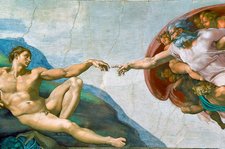
3. Keep your sense of humor.
I think we all have chapters in our lives where it literally feels like nothing is going right. Not the big stuff. Not the small stuff. Not the in between stuff. Your alarm doesn’t go off so you are late for an important meeting… You run out the door with a run in your panty hose and a stain on your jacket… and you get a flat tire on the way there and it starts to rain while you are trying to change it (or, let’s be honest, trying to find someone else to change it) and… You get my point. In these moments, I never know if I am going to burst into tears or laughter. Usually, I end up doing a little (or a lot) of both.
I would imagine Michelangelo had to feel that same overwhelming sense of “THIS is BULLSHIT” a time or two (or ten) while painting that damn ceiling. So how did he endure four years of it? I would say his sense of humor had to play some part in that based on a poem he sent to his friend Giovanni da Pistoia where he described the toil the project was taking on his body by saying “I’ve already grown a goiter from this torture.” He went on to complain that his “stomach’s squashed under [his] chin,” his “face makes a fine floor for droppings,” his “skin hangs loose below [him]” and his “spine’s all knotted from folding [himself] over.” And he ended by saying “I am not in the right place—I am not a painter.” Can I get an amen please?
4. Don’t give up.
No matter how old or jaded I get, I still hold out hope for the happy ending. It’s all those fairy tales I was fed as a little girl. I may not know what “happily ever after” means, but I have some ideas. And in this case, I wanted the tour guide to tell us that Michelangelo returned to work on his dream project and it turned out to be even better than that ceiling (I like to refer to it that way out of respect for Michelangelo, the Sculptor) and he was totally vindicated and he took out billboards all over town that said “MICHELANGELO, THE SCULPTOR. GOT IT?” and Julius was sorry he ever asked “Michelangelo, the Sculptor” to masquerade as “Michelangelo, the Painter.” Well, that wasn’t exactly what happened.
His dream project, the tomb, never received the critical acclaim that those ceilings did. Not even close. BUT, the tomb was finished- albeit on a smaller scale than originally intended 40 years after the project was commissioned…. Regardless, there is a lot to be said for valuing yourself and your dreams enough to keep returning to them and to finishing something purely because it matters to you. Take that, Pope Julius.
5. Don’t let the bastards get you down.
When I googled this quote to give proper credit, I realized it was attributed to many different people. Really though, the most important person who ever said it was my stepfather so don’t even worry about those other people. Whenever I would call home upset because some partner at work had yelled at me, demeaned me, took credit for my work, etc. (Doesn’t working in a big law firm sound grand?), Dean’s response was always the same. He would let me go on (and on and on) and then he would calmly and quietly say “Don’t let the bastards get you down.” Period. End of story. The phrase is now legendary in our family, and I like to think he feels pride from Heaven every time one of us reminds the other of this valuable edict.
In the case of Michelangelo, the phrase immediately popped into my head when our tour guide told us that the rumor is that two other artists, Donato Bramante and Raphael, were sour grapes over Michelangelo getting the tomb commission and so they convinced Pope Julius that it was bad luck to have his tomb built during his own lifetime and that Michelangelo’s time would be better spent on the Sistine Chapel ceiling. They told him this knowing that Michelangelo was a sculptor, not a painter and thus they thought he would likely fail at painting the ceiling.
Nice try, bastards.

6. Make it work.
Tim Gunn was right- sometimes you just have to make it work. It may not be what you expected or wanted, but it’s what you got. So make the best of it. In the case of the statue of David, two different artists before Michelangelo had attempted to carve the statute from the mass of marble that had been selected for it. There was a ten year gap between the first artist and the second and then the marble sat for 25 years before Michelangelo began working on it. In fact, the marble was described in an inventory before Michelangelo began work on it as “a certain figure of marble called David, badly blocked out and supine.” When the overseer for the museum decided to call people in to examine the marble and try to get the statute made, Leonardo da Vinci and other well known artists declined the assignment because they found it too risky. 26 year old Michelangelo convinced them to give him the job.
Can you imagine how he must have felt on that first September day early in the morning when he showed up to begin his work? There he was-26 years old having signed up for a job that far more experienced artists had declined. He must have sat and stared at the enormous block of old marble that has been been cut and chiseled on by two prior artists and thought “What the hell was I thinking?”
Apparently the design he chose for David was driven in large part by the limited amount of good marble with which he had to sculpt.
Surely he had to have periods where he wondered if he could possibly pull it off.
But, he certainly made it work, didn’t he?
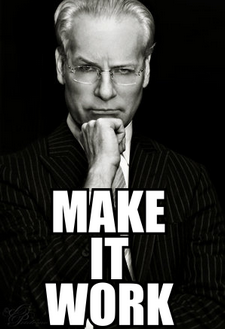
7. Don’t be afraid to be different.
One of the things that made Michelangelo’s David statute so unique was that he chose to depict David before the battle with Goliath- sling shot in hand, a look of sheer determination in his eyes. The two prior portrayals of David- Donatello’s and Verrocchio’s- had depicted him after the battle with Goliath’s head as proof of his victory. His decision to do it differently was initially met with much trepidation and criticism. But doesn’t it seem as though most great things are?
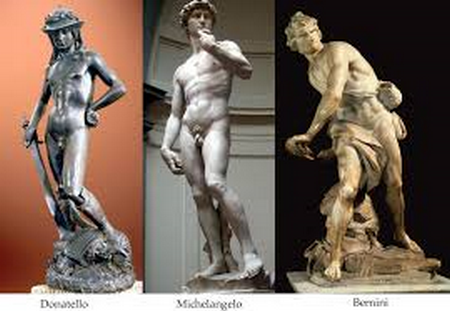
8. No one is perfect.
As I thought back over my dramatic shift from Michelangelo hater to the president of his fan club, I tried to pinpoint exactly what it was that made me like him so much. His creativity, his bravery, his determination, his resolve all factored into it. But, I am a pretty hard critic. I don’t think any of those things would have tipped the scales were it not for the last detail that I learned about Michelangelo. Critics have written extensively about how anatomically accurate the statue is- the veins, the bones, the muscles, the brows, the pupils. A particularly incredible feat when you remember he did all this with marble. However, there is one major thing about the statute that is not accurate. In fact, it is downright wrong…Michelangelo sculpted David as being uncircumcised. David was Jewish and history tells us he would have definitely been circumcised. But Michelangelo lived in Catholic Italy and his knowledge and understanding about Jewish customs and circumcision would have been very limited as would his access to circumcised models.
A glaring mistake amongst all that perfection. Isn’t that glorious?
So now, when I look at photographs of the statue of David, I see a masterpiece. But I see so much more than that.
I see a 26 year old man sitting alone staring as a mass of marble thinking “What have I gotten myself into?”
I see his contemporaries trying to sabotage him.
I see his critics shaking their heads in disbelief at this young artist who foolishly thought he could succeed at something so risky.
I see an excited artist showing up to work on his dream project only to be told there has been a change of plans.
I see a person who endures a job he hates in order to pursue his true passion.
I see a perfectionist who wants desperately to be perfect- but who nevertheless makes mistakes- because he is, after all, only human.
I see a young man-scared, unsure and unproven- preparing for battle- and I see a young artist that was doing much the same thing.
And that is why I love him.


















